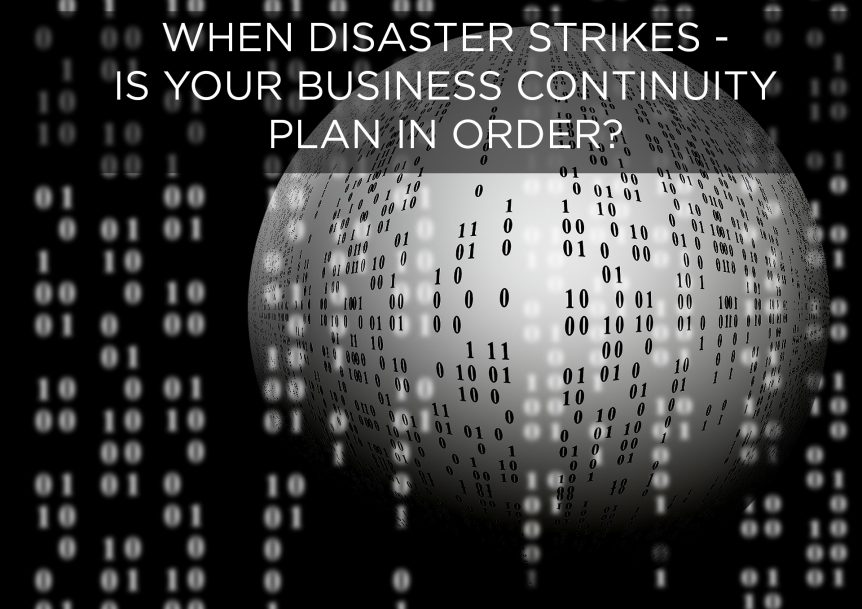Over the course of the next few weeks, we will be delving into business continuity and disaster recovery, what it means (also for your organization), and why you need it.
Data loss, whether intentional or accidental, is not only inconvenient, but can have severe financial implications and indeed cost you your business.
Recent statistics indicate that:
- 93% of companies without business continuity and disaster recovery that suffer a major data disaster are out of business within one year;
- 96% of companies with a trusted business continuity and disaster recovery plan were able to survive ransomware attacks; and
- more than 50% of companies experienced a downtime event in the past five years that lasted longer than a full workday.
Despite these staggering statistics, it is estimated that only 35% of small and midsize businesses have a comprehensive disaster recovery plan (DRP) in place and maintain their DRP. Although many organizations recognize that a DRP is invaluable, for various reasons they struggle to implement, maintain and, importantly, test it to ensure it still meets the business’s needs. In a study conducted by Computer Economic, research director Tom Dunlap notes that “[t]he problem is that in the day-to-day struggle to maintain operations and meet the needs of the business, more than half of our respondents admit that they don’t do the things to maintain a consistent and formal DR plan. For instance, they may not review the plan regularly, or perhaps they do not consider service providers in their DR planning.”
This post defines and explains the terms DRP and BCP, highlights the difference between the two and emphasizes the need for a proper DRP.
1. What is a disaster recovery plan?
According to Technopedia, a DRP “is a business plan that describes how work can be resumed quickly and effectively after a disaster. Disaster recovery planning is just part of business continuity planning and applied to aspects of an organization that rely on an IT infrastructure to function. The overall idea is to develop a plan that will allow the IT department to recover enough data and system functionality to allow a business or organization to operate – even possibly at a minimal level.”
2. What is a business continuity plan?
A BCP is a plan of action aimed at ensuring that regular business will continue during and after a disaster. It should consist of:
- an organizational threats analysis;
- a list of the primary tasks required to keep the organization’s operations flowing;
- management contact information that can be easily located;
- explanation of where personnel should go if there is a disastrous event;
- information on data backups and organization site backup;
- collaboration among all facets of the organization; and
- buy-in from everyone in the organization.
3. What is the difference between a business continuity plan and a disaster recovery plan?
BCPs and DRPs are sometimes used interchangeably. Although there exists some similarities between the two, it is important to understand the difference, as these are entirely different strategies yet both playing a significant role in keeping business operations safe. A BCP refers to how loss of business can be avoided and define the requirements for business continuity. A DRP ensures that computer systems and all accompanying software and connections can be restored to full functionality in the event of a disaster.
4. Why do I need a business continuity plan and a disaster recovery plan?
At some point, some type of disaster will threaten your organization’s data and system functionality. Too often organizations equate disasters with cyberattacks, losing sight of the fact that other types of disasters can have the same damaging effects. Disasters such as power outages, sabotage, terrorism, and natural disasters (such as floods, fires and earthquakes) can cause physical destruction to your network. Having a BCP and DRP in place ensures you take the necessary steps to prepare for disasters (the BCP) and you have the necessary tools to restore data and business functionality during and after a disaster (the DRP).
In our next post, we will be discussing best practices for disaster management.
Securing your organization’s data through disaster recovery and business continuity solutions is of utmost importance to protect your business during an unforeseen, catastrophic event. Stage2Data is one of North America’s most trusted cloud solution providers, offering secure data management at a cost effective price. Contact our team for more today.



